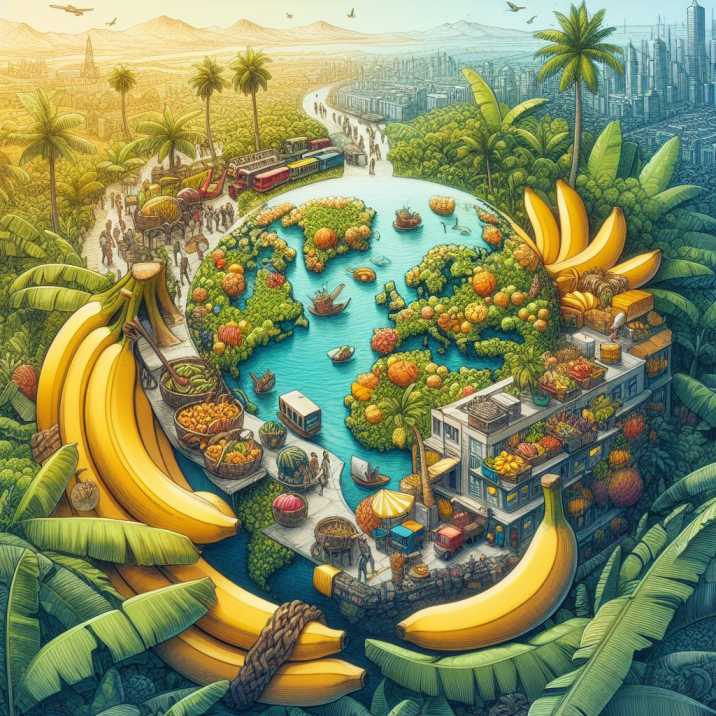Introduction:
Table of Contents
Cavendish bananas are a staple fruit enjoyed by millions around the world. But have you ever wondered how these bananas make their journey from tropical plantations to your local grocery store? In this comprehensive guide, we’ll delve into the intricate process of how Cavendish bananas are distributed and traded on a global scale.
Understanding Cavendish Bananas:
Cavendish bananas are a popular variety known for their consistent size, shape, and taste. They are the most widely cultivated type of banana and are favored for their versatility in cooking, baking, and snacking.
Global Production Hubs:
Key banana-producing regions such as Latin America, Southeast Asia, and Africa serve as the primary sources of Cavendish bananas. These regions offer optimal climates and fertile soil for banana cultivation.
Harvesting and Processing:
Bananas are harvested while still green and undergo a meticulous sorting process to ensure quality. They are then transported to processing facilities where they undergo washing, packaging, and ripening procedures.
Distribution Networks:
Global distribution networks play a crucial role in transporting Cavendish bananas from production hubs to consumer markets worldwide. This involves a combination of transportation modes, including ships, trucks, and trains, to ensure timely delivery.
Trade Dynamics:
The global banana trade is a complex web of transactions involving producers, exporters, importers, and retailers. Trade agreements, tariffs, and market demand heavily influence the flow of Cavendish bananas across borders.
Market Trends and Demand:
Consumer demand for Cavendish bananas continues to grow, driven by factors such as population growth, urbanization, and changing dietary preferences. As a result, producers must adapt to meet the evolving needs of the market.
Challenges in the Industry:
The banana industry faces various challenges, including disease outbreaks, climate change, and labor issues. These factors can impact production levels, quality standards, and supply chain efficiency.
Sustainability Efforts:
Efforts are underway to promote sustainable banana cultivation practices, such as organic farming, water conservation, and fair labor practices. These initiatives aim to minimize environmental impact and support local communities.
Conclusion:
In conclusion, the global distribution and trade of Cavendish bananas involve a complex network of production, transportation, and market dynamics. Despite challenges, the popularity of Cavendish bananas continues to soar, making them a vital commodity in the global economy.
FAQs:
- How are Cavendish bananas transported?
- Cavendish bananas are typically transported via refrigerated containers to maintain freshness during transit.
- Which countries produce the most Cavendish bananas?
- Ecuador, Costa Rica, and the Philippines are among the top producers of Cavendish bananas globally.
- Are Cavendish bananas genetically modified?
- No, Cavendish bananas are not genetically modified. They are a naturally occurring variety of banana.
- What is the shelf life of Cavendish bananas?
- Under optimal conditions, Cavendish bananas can typically last up to two weeks before becoming overripe.
- How do trade agreements impact the banana industry?
- Trade agreements can affect tariffs, import/export quotas, and market access, influencing the flow of Cavendish bananas between countries.

